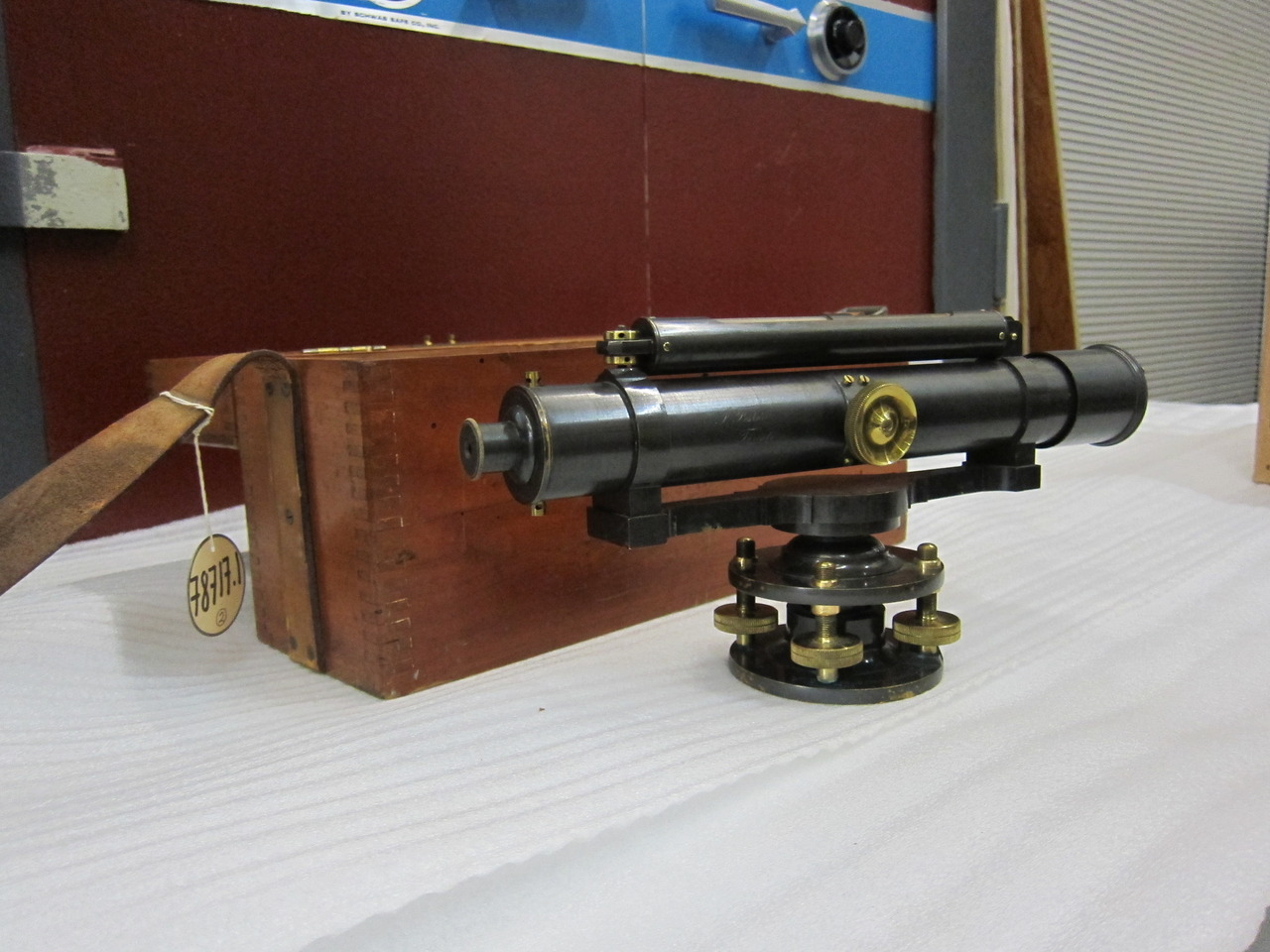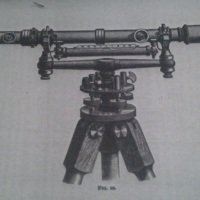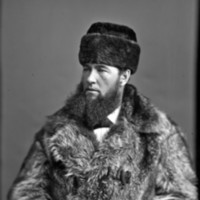James Foster
James Foster: Biographical Information
- The maker of the featured level was James Foster, a producer of instruments from Toronto, Canada.
- Born in 1830, in Toronto[1]
- Age 16: Started studying and dedicating his time to being a “mathematical instrument maker”
- 1873: New building, started to make “surveying and engineering instruments”
- 1883: Moved business to 13 King Street West; flourishing success thereafter[2]
- Produced such instruments as compasses, levels, telescopes, and transits[3]
- His business became one of the most significant sources of competition for Charles A. Potter, a prominent instrument manufacturer also based in Toronto[4]
- “Foster was probably the longest surviving independent instrument maker in Canada and was functioning from ca. 1870 to 1910.”[5]
- Provided photo-theodolites for the Geological Survey of Canada[6]
- In sum: One of the most successful instrument makers in late-nineteenth century Toronto[7]
The Level: Some Notes on Function, Purpose, etc.
Although the functions of the surveying level were quite technical and complex, even in the nineteenth century, the main overall purpose of the instrument was to assist in measuring vertical (and even horizontal) distances.[8] Thus, determining "relative elevation" in different regions was one useful application of the level.[9] The device wa often used to generate a "profile of a line," or a drawn representation of different land elevations of terrain.[10]
One can distinguish between water levels and spirit levels. The featured level was likely one of these. A water level has a tube filled with dyed water, while spirit levels exploit a bubble tube filled with alcohol. When such an instrument also had a telescope interated into it, it was referred to as an "Engineer's spirit-level."[11]
The (simplified) procedure of levelling consists of placing the device between two points of interest, and, possibly using levelling rods, measuring - through a combination of calculations - the difference in height.[12]
John McLatchie, Canadian Land Surveyor
- Born 1842 - West Templeton, Quebec to Scottish-Canadian parents [13]
- Became a P.L.S. in 1864 - timber limits surveying in Ottawa region [14]
- Became a D.L.S. in 1872 - worked in various regions across Western Canada (Manitoba, Alberta, etc)[15]
- Lived for a time in Nelson, B.C. (moved 1896, became PLS for British Columbia)[16]
- Died in 1908, in Calgary
- “John McLatchie was a man of powerful build and physique... [he] worked with [an] intensity that few could follow. His instrument he looked upon as his chum, and he had the habit of talking to it, telling it what it had to, to be on its good behaviour so that the work might be satisfactory.”[17]
Additional Information
- Jonathan Sisson and Thomas Heath were the innovators responsible for the fusing of telescope and level into one instrument.
- Sisson, in particular, invented the style known as the Y-level, which was soon embraced as a standardized format for the instrument.
- Soon enough, however, there arose a demand for accessibility and ease of use. This gave rise to Gravatt’s 1830s-era dumpy level – a level with a more "compact form" and increased light in the telescopic lens, among other improvements.
- The exact style of Foster’s level is unclear. Upon first glance, its more ‘compact’ features, and the dating of the dumpy level to the 1830s, suggest that this instrument may be a dumpy level. However, the Canadian Science and Technology Museum, which is currently preserving this item, distinguishes between this level (a "common surveyor's level") and "Gravatt's dumpy level" (which had a "second transversely mounted bubble, and improved optical capabilities").
- In sum, this instrument was likely of a style which preceded the dumpy level.
Sources used for additional information:
Gerard L’E. Turner, Nineteenth-Century Scientific Instruments (Los Angeles: University of California Press, 1983), 253-254.
Artifact no. 1978.0717 Canada Science and Technology Museum.
[1] Charles Pelham Mulvany et al., History of Toronto and County of York, Ontario: Biographical Notices (Toronto: Robinson, C.B., 1885), 50-51.
[2] Charles Pelham Mulvany et al., History of Toronto and County of York, Ontario: Biographical Notices (Toronto: Robinson, C.B., 1885), 50-51 [source for all prior information in this heading].
[3] University of Toronto, Papers: Issues 2-6 (Toronto: Engineering Society of the School of Practical Science, January 1, 1888), 117.
[4]Julian A. Smith, “Charles Potter, Optician and Instrument Maker,” Journal of the Royal Astronomical Society of Canada 87.1 (Feb., 1993): 19.
[5] Randall C. Brooks and William J. Daniels, “Surveying Instrument Makers of Central Canada.” Canadian Journal of Civil Engineering 26.6 (1993): 1042-1043.
[6] Ibid.
[7] History of Toronto and County of York, 51.
[8] W.M. Gillespie, A Treatise on Land-Surveying (New York: D. Appleton & Co., 1865), 409.
[9] C.E. Johnson, The Theory and Practice of Surveying (New York: John Wiley & Sons, 1889), 71.
[10] A Treatise on Land-Surveying, 413.
[11] A Treatise on Land-Surveying, 410.
[12] A Treatise on Land-Surveying, 411.
[13] Association of Ontario Land Surveyors, Annual Report of the Association of Ontario Land Surveyors and Proceedings of the Thirtieth Annual Meeting Since Incorporation, by Association of Ontario Land Surveyors 1922. Canada: 128.
[14] Ibid.
[15] Ibid, 128-129.
[16] Ibid, 130.
[17] Ibid, 130.




